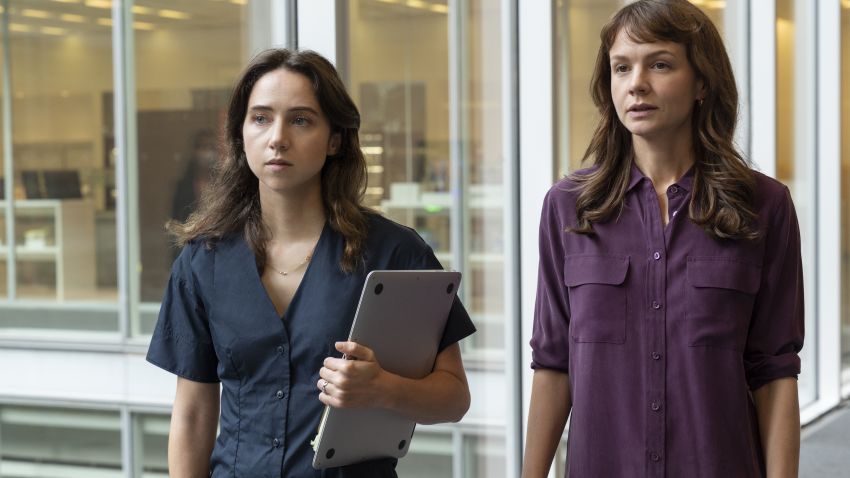Editor’s Note: Jill Filipovic is a journalist based in New York and author of the book “OK Boomer, Let’s Talk: How My Generation Got Left Behind.” Follow her on Twitter. The opinions expressed in this commentary are solely her own. View more opinion on CNN.
Once upon a time, Rebecca Solnit wrote in a lyrical column: “There was a man who was in charge of stories. He decided that some stories would be born, expensive, glamorous stories that cost more than a hundred minimum-wage earners might make in a hundred years, filmy stories with the skill of more hundreds expended so that they would slip in like dreams to the minds of millions and make money, and he made money and the money gave him more power over more stories.”
She continued: “There were other stories he decided must die. Those were the stories women might tell about what he had done to them, and he determined that no one must hear them, or if they heard them they must not believe them or if they believed them it must not matter.”

The stories about America’s most famous story killer have now been told, and told again. Since the New York Times and The New Yorker broke the news of Harvey Weinstein’s serial acts of assault and harassment, the list of men publicly indicted for mistreating women has ballooned beyond memory.
#MeToo remains a movement in progress, albeit one that has slowed. And two new films, “She Said” and “Women Talking,” provide important capstones to what has been a very vocal, if incomplete, revolution. Both are stories about the power of women speaking out, and, importantly, both are stories brought to the silver screen by women, who are retelling the stories female journalists first told, which other women told to them.
These are movies women built. And they are an inversion of what made men like Weinstein so noxious: Weinstein wasn’t just a powerful man, he was a man who, as Solnit writes, held the power to tell us stories about ourselves, to determine which stories mattered, which narratives would be definitional, universal, valuable.
His misogyny wasn’t just an interpersonal failing; it meant something that a man who treated women with violence, coercion and contempt was also a man who shaped the cultural products that help us to metabolize our histories, refine our principles and understand ourselves.
And Weinstein wasn’t alone. The list of men in media, publishing, entertainment, and politics who were accused in #MeToo includes names from the world’s top newspapers, magazines, and television stations – men who were shaping our understanding of men, women, American politics and what it means to be human.
“In hearing these individual tales, we’re not only learning about individual trespasses but for the first time getting a view of the matrix in which we’ve all been living,” journalist Rebecca Traister wrote for New York magazine’s The Cut in 2017. “We see that the men who have had the power to abuse women’s bodies and psyches throughout their careers are in many cases also the ones in charge of our political and cultural stories.” How gratifying, then, to see at least some of those stories grabbed back.
“She said” tells a now-familiar tale, but with the drama and urgency of any great journalism film (think “All the President’s Men” or “Spotlight”). Directed by Maria Schrader, it dramatizes the peeling-back of the Weinstein story by New York Times reporters Jodi Kantor and Megan Twohey, played by Zoe Kazan and Carey Mulligan. And importantly, the film emphasizes the bravery of the women who spoke with Kantor and Twohey as much as it does the doggedness of the two journalists.
“Women Talking” is a stunning, haunting film based on the best-selling 2018 novel by Miriam Toews, itself inspired by a 2013 story by journalist Jean Friedman-Rudovsky in Vice, who reported on a string of “ghost rapes” in a Mennonite community in Bolivia – how the rapes felt impossible to comprehend in the insular and patriarchal community in which they happened; how that same insular and patriarchal community, with its taboos around sex and sexual violence and its requirement of female obedience, allowed the attacks to go on for years and left women and girls suffering in silence; how women and children were ordered to forgive and move on.
Neither “Women Talking” the novel nor “Women Talking” the film is about the journalist’s role, and both are fictionalized accounts of a true story. But both try to do the same work that Friedman-Rudovsky did in her initial reporting: Tell the story through the eyes and experiences of the women who lived through it. And that means emphasizing that the power of this story is not in the horrific attacks, but in what came after, when women got together, spoke out and collectively decided that they were not the crazy ones – and something had to change.
Sound familiar?
Already, too many casual observers are seeing the less-than-blockbuster reception to “She Said,” which made just $2.2 million in its opening weekend after $30 million in production costs, as evidence of… something. The death knell of #MeToo? A backlash against feminism? Boredom with these now well-trod tales of bad men and vulnerable women turned victorious?
Even Weinstein himself got in on it. His spokesperson, Juda Engelmayer, told Variety that this story “has been told over and over again these past five years and it is clear that there was little worth paying to see it here. Harvey, the film producer and distributor, would have known that.”
But Harvey, the film producer and distributor, is currently sitting in jail. And the real story of “She Said,” “Women Talking,” and other films where women take hold of the narrative and are the central characters – the victims, the heroes, sometimes the villains – isn’t whether every single one of them must be overwhelmingly popular in order to signal something important.
It’s that these stories see the light of day, that they are told and told again as many times and in as many formats as the issues they portray shape women’s real lives. It’s that women’s experiences are increasingly being considered fodder for dramas and told through a female gaze, with women shaping the plots and setting the scenes.
It’s that, hopefully someday, the stories women tell about our lives won’t be sequestered off as some special-interest topic, with a single film’s success or lack thereof assumed to make or break a genre, but rather treated like men’s lives: Captured in all their knottiness, the magnificent parts and the monstrous, told not simply as “women’s stories,” but as essential and universal human ones.





